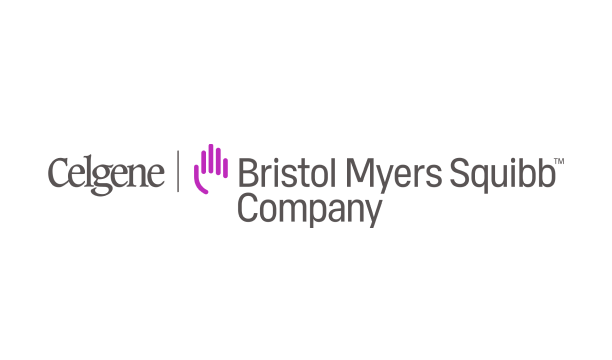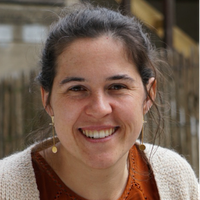Before you watch this webinar
Enhancing your learning experience begins with understanding you better. Collecting data enables us to tailor our educational content specifically for our audience. Discover more about how we handle your information in our Privacy Policy.
Event
Preparing patients for their online follow up appointments
Our sponsors


CPD accreditation
This webinar has been approved by the Federation of the Royal Colleges of Physicians of the United Kingdom for 1 category 1 (external) CPD credit(s). To claim the credit please email hughskelton@neurologyacademy.org
Presentation slides by Amy Harbour
Presentation slides by Dr Andrea Stennett
Summary
Moving from face-to-face to remote follow-up appointments is a work in progress and teams are learning as they go, said Dr Andrea Stennett.
Prior to the pandemic, her service, which has a caseload of around 3,000 people with MS, saw patients at least once a year. During consultations, Andrea would set a series of tests, including the Nine-hole Peg Test, a 25ft walking test, and the Symbol Digit Modalities Test.
The results inform the need for more in-depth assessment or referrals to other services, help guide discussions around self-management, and identify people who are suitable for research.
Remote testing
The SARS-CoV-2 pandemic forced teams to swap face-to-face consultations for remote appointments, either by phone or video. This posed the question of how to carry out remote testing.
The team’s pragmatic approach included developing a suite of communication tools including:
- a one-page clinic letter giving a brief introduction and description of the test
- links to videos of the tests being carried out on Bart’s Clinic Speak website
- a self-monitoring sheet for patients to fill in their scores and return to the team
The remote testing appointments were offered to all patients. Those who opted in received a phone call to explain why the tests are important, and how to do them, and to find out if they needed a Nine-Hole Peg test sent out to them. This was followed up by email or post, based on patient preference.
Once the person completes their tests, they return their self-monitoring sheets to a dedicated email address.
Six months on
Since May, around 500 patients have been contacted, and Andrea said there had been “opportunities and challenges”.
Opportunities:
- increased self-management, patient activation, and engagement
- increased opportunity for patients to raise concerns
- increased family involvement
Challenges:
- difficulty contacting people via the phone due to unknown caller ID
- difficulty returning scores via email
- cost of Nine-Hole Peg Test
The team now want to evaluate:
- patient experience
- healthcare professional experience
- remote data quality
Conducting a virtual neurological exam
Dr Ide Smets said almost all of Bart’s MS clinics are now conducted remotely, which has sometimes made it difficult to get “the full clinical picture”.
There have also been some technical challenges to using accuRx, an NHS-licenced video consultation platform. “You enter the patient’s NHS number and date of birth, and they get an ordinary text message that contains a link. When they click on the link, it opens the video clinic,” explained Ide.
“One of the biggest things is that people consider this link to be spam, so sometimes it’s necessary to also call people separately to inform them that you sent the message, that it’s safe, and that they can follow the link.”
Despite such teething problems, Ide believes video clinics are superior to phone consultation. “But there are also disadvantages. It can be difficult to get reliable clinical information from remote encounters.”
Virtual neurological examination
Ide has been working with colleagues to develop a three-part neurological examination that can be conducted on a video call.
The patient first positions themselves around 50cm from the camera, then mirrors the clinician carrying out tests such as raising the arms. This screens for distal versus proximal motor weakness, though doesn’t allow for a thorough evaluation of skeletal muscle strength.
The second part of the exam evaluates the cranial nerves. Clinicians can use the Eye Handbook app to evaluate visual acuity. For this part of the exam, Ide said, patients should position themselves “one index finger” away from the camera.
Observation from a distance, to evaluate the lower limbs, is the third part of the exam. People need to position themselves so the clinician can see their feet and legs, so as to assess gait.
- More explanations on the exam, including videos for informational patients and healthcare professionals, are available at www.virtuex.org
Tips and tricks on virtual preparation
Amy Harbour’s MS team send a “how to prepare for a video consultation” leaflet ahead of all appointments.
It includes information on:
- technology
- what equipment they might need (laptop, tablet, smart phone etc)
- tips such as making sure the device is charged, that the camera is working, and that they have enough light
- practicalities:
- choosing somewhere they are comfortable to talk (i.e. not at work)
- making notes on what to discuss before the appointment
- explaining that family members/carers can join the conversation
- tips:
- prop up the device if MS symptoms make it hard to hold
- have a list of medications to hand
- make sure the team have your telephone number in case the IT fails
- wear comfortable shoes so the team can assess walking
Coordinated effort
The team’s two MS coordinators help the “technologically shy” by offering them the chance to try a “dummy consultation” ahead of their appointment.
The coordinators also send out text reminders and audit by contacting patients post-consultation.
Feedback has found that 57% of people said virtual clinics supported their lifestyle. Most said they would recommend the system to a friend, and the majority agreed that the system was easy to use.
Pros and cons
The disadvantages of video consultations, Amy said, was that people can be camera shy and find the whole thing uncomfortable. From the healthcare professional’s point of view, it can be hard to see subtle changes.
“We also found it was difficult to do newly diagnosed consultations, so we’d still like to do those face-to-face,” said Amy.
“In terms of pros, we cover a really large geographical area, so we have saved a lot of time, money, and petrol.”
Our sponsors


Encouraging excellence, developing leaders, inspiring change
MS Academy was established five years ago and in that time has accomplished a huge amount. The six different levels of specialist MS training are dedicated to case-based learning and practical application of cutting edge research. Home to national programme Raising the Bar and the fantastic workstream content it is producing, this is an exciting Academy to belong to.


